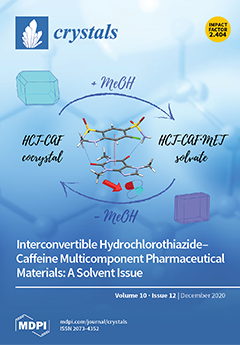In this paper, the structure and photoelectric characteristics of zincblende In
xGa
1−xN alloys are systematically calculated and analyzed based on the density functional theory, including the lattice constant, band structure, distribution of electronic states, dielectric function, and absorption coefficient.
[...] Read more.
In this paper, the structure and photoelectric characteristics of zincblende In
xGa
1−xN alloys are systematically calculated and analyzed based on the density functional theory, including the lattice constant, band structure, distribution of electronic states, dielectric function, and absorption coefficient. The calculation results show that with the increase in
x, the lattice constants and the supercell volume increase, whereas the bandgap tends to decrease, and In
xGa
1−xN alloys are direct band gap semiconductor materials. In addition, the imaginary part of the dielectric function and the absorption coefficient are found to redshift with the increase in indium composition, expanding the absorption range of visible light. By analyzing the lattice constants, polarization characteristics, and photoelectric properties of the In
xGa
1−xN systems, it is observed that zincblende In
xGa
1−xN can be used as an alternative material to replace the channel layer of wurtzite In
xGa
1−xN heterojunction high electron mobility transistor (HEMT) devices to achieve the manufacture of HEMT devices with higher power and higher frequency. In addition, it also provides a theoretical reference for the practical application of In
xGa
1−xN systems in optoelectronic devices.
Full article





